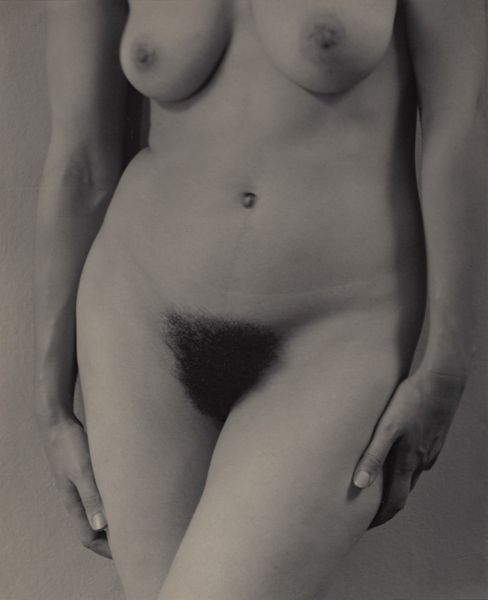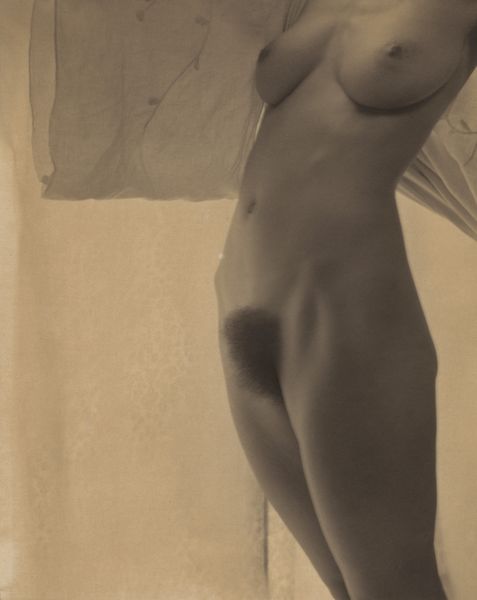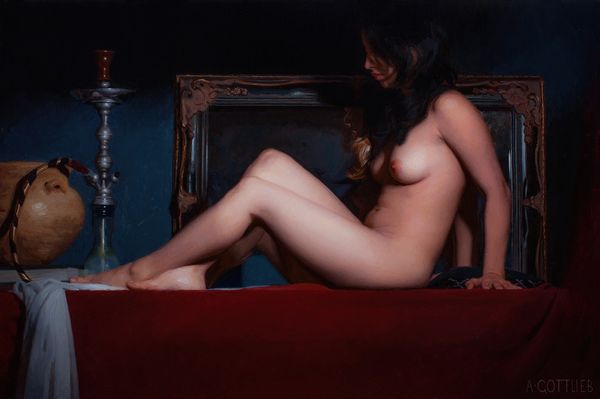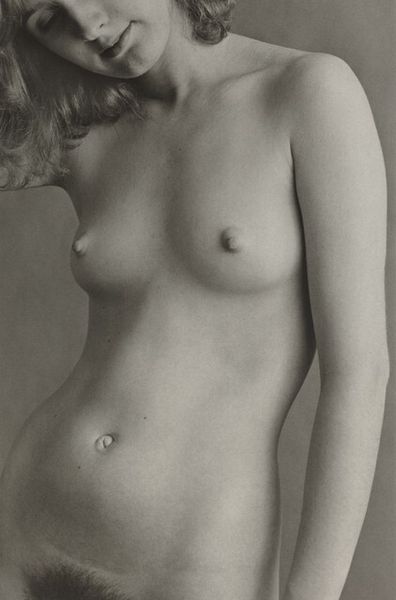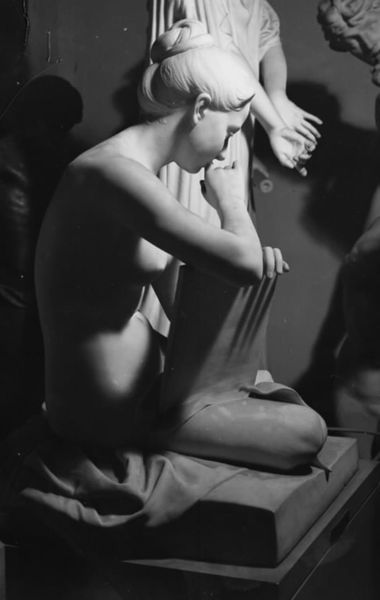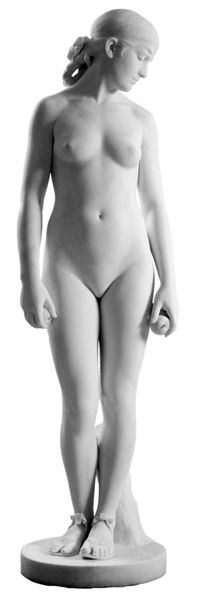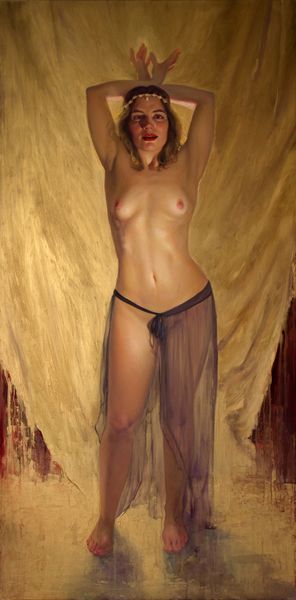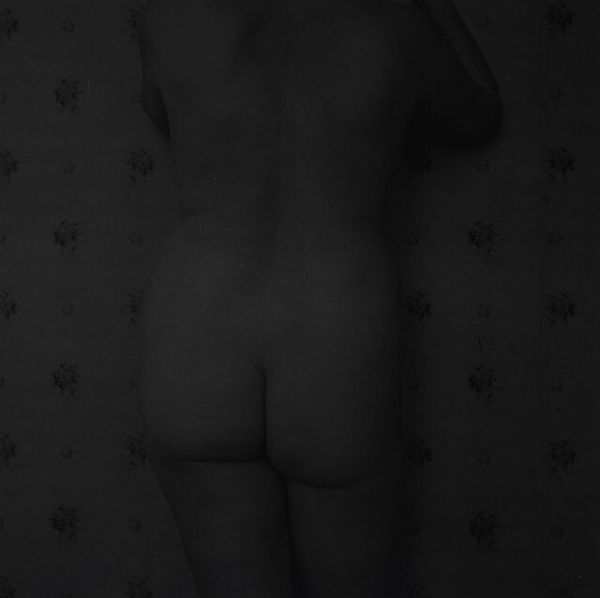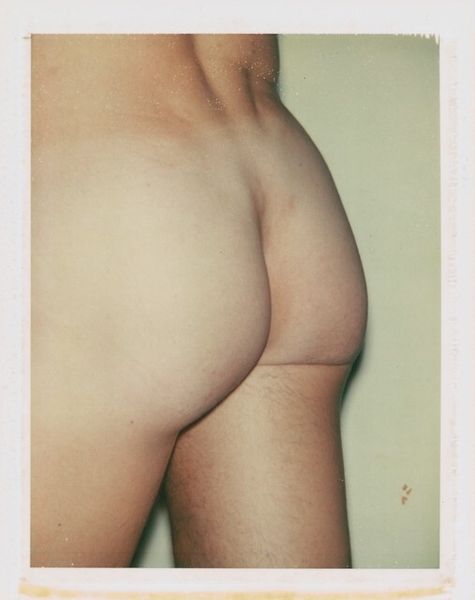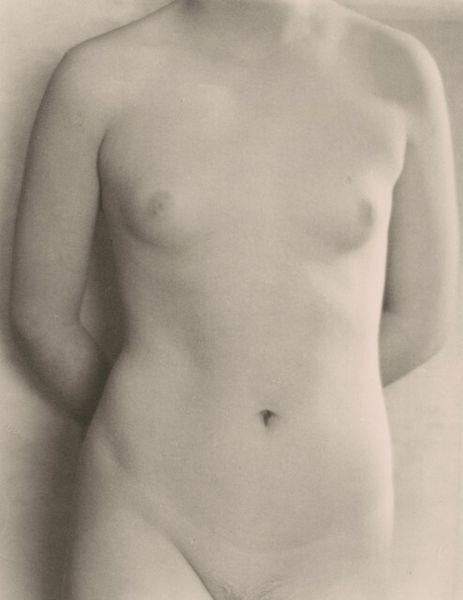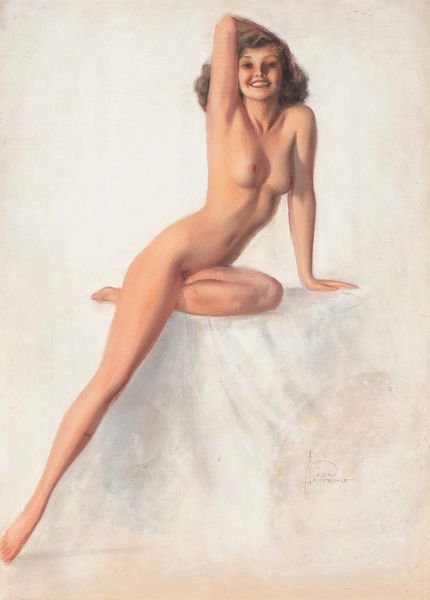
photography
#
portrait
#
contemporary
#
self-portrait
#
figuration
#
blurred
#
photography
#
underpainting
#
human
#
nude
#
exhibition
Copyright: All content © Elina Brotherus 2018
Curator: Elina Brotherus' "Model Study 8," created in 2008, presents us with a quietly arresting self-portrait executed through photography. What's your initial reaction to this piece? Editor: My first thought? "Oof, that's brave." Seriously, there's a vulnerability that's almost startling. The nude figure, the cracked plaster wall...it all feels raw and exposed. The globe, though...what’s with the globe? It’s like she’s protecting something incredibly precious or maybe even hiding. Curator: Indeed, it challenges conventional notions of beauty and representation, echoing discourses around the female body in art history and the photographer as model. The globe acts as a barrier, drawing the eye but simultaneously obscuring. It’s an intriguing layer. The artist studied at the University of Art and Design in Helsinki and this self portrait sits at the confluence of staged performance and art historical referencing. Editor: Staged, yes, but the performance feels so un-theatrical. It's more like a…a still life coming to life for a fleeting second. The cool tones and textures of the wall feel like an Old Master's underpainting, and here's Brotherus inserting herself, owning that space. She is disrupting these kinds of painterly legacies of the female nude. It is kind of an interesting game! Curator: Absolutely. There's a reclaiming of agency, shifting the gaze from passive object to active subject. How do you think the composition contributes to the artwork’s overall impact? Editor: The stark simplicity is key. Everything leads you to the center: the subject’s positioning, the contrast between skin and wall, even that single, solitary wire trailing from under her foot – is that connected to the globe? It’s beautifully unsettling! The blur hints that the world and our perception are never truly crisp. Curator: It also evokes questions around the ideal and real; the body against a less-than-perfect backdrop highlights that interplay. The setting becomes a comment on the constructed nature of images and how institutions contribute to constructing these ideas, which Brotherus is simultaneously participating in and critiquing. Editor: It’s a gutsy act of self-exposure, or maybe more accurately a skillful act of self-revelation that hides as much as it shows. It certainly got me thinking. Curator: Me too. Brotherus invites a dialogue with art history itself, and our engagement in its evolution.
Comments
No comments
Be the first to comment and join the conversation on the ultimate creative platform.
